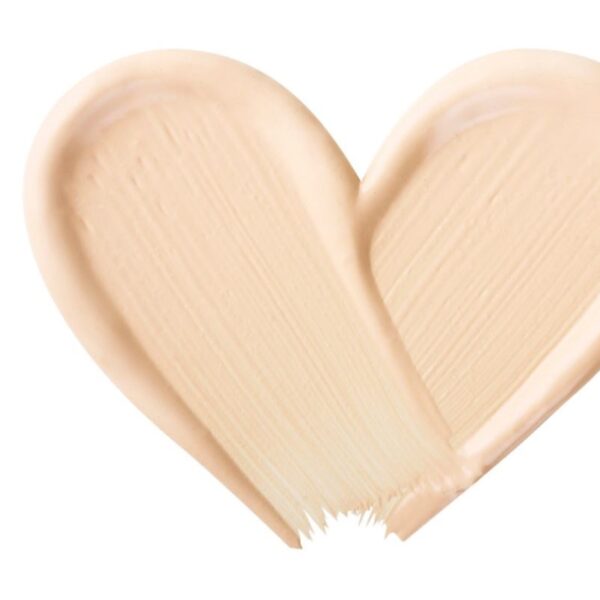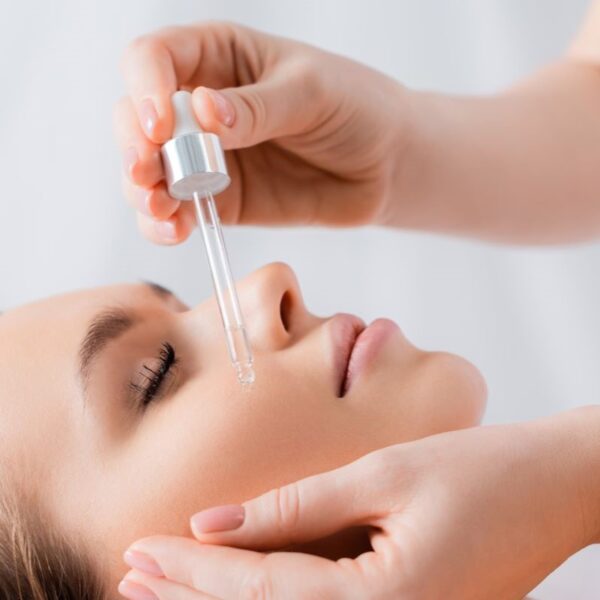Stearic acid is one of several long-chain fatty acids that appears as a white, waxy, solid substance, often crystalline in structure. It’s used as a surfactant and softening agent in cosmetics and as an emulsifier and thickening agent in detergents and soaps. It’s prevalent in personal care products due to its skin-smoothing abilities and is a primary component of shea and cocoa butter.
What is Stearic Acid?
Stearic acid is a saturated fatty acid with an 18-carbon chain. Its IUPAC name is octadecanoic acid and its formula is CH3(CH2)16CO2H. It is present in animal fats and oils and in some kinds of vegetable oils in the form of glycerides.
Stearic acid is mainly used for the production of stearates such as sodium stearate, magnesium stearate, calcium stearate, lead stearate, aluminum stearate, cadmium stearate, iron stearate, and potassium stearate.
Source: Wikipedia
How is Stearic Acid Produced?
Stearic acid is produced from vegetable fats and oils for cosmetics and personal care applications. Various pressing methods separate unsaturated fatty acids from solid saturated fatty acids. Cosmetic-grade stearic acids are often mixtures of fatty acids.
Use of Stearic Acid in Cosmetics and Personal Care Products
Stearic acid is especially common in producing detergents, soaps, and cosmetics, such as shampoos and shaving cream products. Soaps are not made directly from stearic acid but indirectly by saponification of triglycerides consisting of stearic acid esters. They are added to the product in molten form and crystallized under controlled conditions. Detergents are obtained from amides and quaternary alkylammonium derivatives of stearic acid.
One of the reasons stearic acid is so desirable in cosmetics is its bifunctional character – it has a polar head group that can be attached to metal cations and a nonpolar chain that confers solubility in organic solvents. The combination is ideal for use as a surfactant and softening agent.
Applications in Cosmetics and Personal Care Products
| Function | Applications |
| Emollient | Stearic acid is used as an emollient. |
| Emulsifier | Stearic acid acts as a barrier and protects the skin while keeping moisture locked in. It is also an excellent conditioner for the hair, acting as a barrier against harmful environmental elements without weighing down the hair. Stearic acid also improves the texture of hair products and helps them spread more evenly. |
| Conditioner and Barrier Protectant | Stearic acid acts as a skin barrier and protects the skin while keeping moisture locked in. It is also an excellent conditioner for the hair, acting as a barrier against harmful environmental elements without weighing down the hair. Stearic acid also improves the texture of hair products and helps them spread more evenly. |
Product Examples
| Type | Examples |
| Skin Care | Face Creams, Moisturizing Lotions, Barrier Creams |
| Bath & Body Care | Foaming Body Wash, Body Cleanser |
| Hair Care | Hair Conditioners, Shampoos, Hair Masks, Styling Pomade |
| Deodorant | Deodorant Sticks |
Properties of Stearic Acid
| Appearance at 25°C | White Powder |
| Molecular Weight (g/ml) | 284.48 |
| Density at 18°C (g/cm3) | 0.845 |
| Specific Gravity | 0.84 (80℃) |
| Solubility | Practically insoluble in water. Soluble in ethanol (96%) and in light petroleum (bp: 50-70°C) |
| Melting Point | 67-72°C |
| Boiling Point | 361°C |
| Refractive Index | 1.4299 |
| Odor | Odorless |
| Shelf Life | 12-18 months |
| Storage Conditions | Store in well-filled, tightly sealed containers in a cool, dry place. Ideal Storage Temperature: Below 30°C. |
Typical Formulations
Shaving Cream
Here is an example of a formulation table for an emollient shaving cream.
| PHASE | INCI Name | TRADE Name | % Wt. |
| A | Stearic Acid | Stearic Acid | 2.75 |
| Cetostearyl Alcohol | Cetostearyl Alcohol | 2.00 | |
| Caprylic/Capric Triglyceride | Cocopure EMOL 100 | 0.30 | |
| Menthol | Menthol Crystals | 0.50 | |
| Aqua | Distilled Water | Qs to 100 | |
| B | Potassium Cocoate | Savonel 869 | 20.00 |
| PEG-90M | Polyox WSR 301 | 0.10 | |
| Phytic Acid | Dermofeel PA3 | 0.20 | |
| Glycerin | Cerin RG | 1.00 | |
| Liquid Cocamide MEA | Hi-Foam 750 | 4.00 | |
| Sodium Lauroyl Sarcosinate | Miami L30 | 1.50 | |
| Cocamidopropyl Betaine | Fil Soft 30 | 2.00 | |
| Fragrance | Fragrance | 0.25 | |
| C | Phenoxyethanol (and)Ethylhexylglycerin | Euxyl PE9010 | 0.50 |
| Triethanolamine | Triethanolamine | qs | |
| Total: | 100 | ||
Formulation Procedure
- In an appropriate container, add stearic acid, cetostearyl alcohol, Cocopure EMOL 100, and menthol crystals. Heat up to 65º C, with occasional stirring. The endpoint must be a clear liquid. [Phase A]
- In a separate container, add distilled water, Savonel 869, Dermofeel PA3, Cerin RG, HiFoam 750, Miami L30, and Fil-Soft 30. Mix at 300 rpm. While mixing, add Polyox WSR 301. Heat up to 65-70º C while mixing. The endpoint must be a clear homogeneous liquid. [Phase B]
- When the target temperature is reached, add Phase A to Phase B, mixing at 500 rpm. Adjust speed if necessary. Remove from heat. Allow to cool while mixing.
- At 40º C, add fragrance and preservative. Add Triethanolamine until pH is 7.20-7.50.
- Incorporate into an aerosol with butane-propane propellant, with 95:5 pre-mix: propellant blend.
Source: Prospector
Stearic Acid Formulation Considerations
- There are three types of stearic acid distinguished by average concentration: 37.5%, 42.5%, and 95.0%, with palmitic acid concentrations of 89.0%, 94.0%, and 97.5%, respectively.
- Regular pharmaceutical grade Stearic Acid specifies a 40.0% minimum of either stearic or palmitic acid and a 90.0% minimum for their sum. Purified pharmaceutical-grade stearic acid specifies a 90.0% minimum stearic acid content and a 96.0% minimum for the sum.
- Stearic acid is incompatible with strong oxidizers and strong bases. Avoid using stearic acid in higher pH formulations such as hair colors.
- Stearic acid is incompatible with reducing agents.
Stearic Acid Safety & Regulatory Considerations
| FDA Information | Included in the FDA Inactive Ingredients Database (sublingual tablets; oral capsules, solutions, suspensions, and tablets; topical and vaginal preparations) |
| EU Information | Accepted as a food additive in Europe (fatty acids). Stearic Acid is not classified as dangerous according to European Union legislation. |
| Canada Information | Included in the Canadian List of Acceptable Non-medicinal Ingredients |
| Cosmetic Ingredient Review (CIR) Information | Based on available data from studies using animals and humans, the Expert Panel concluded that Stearic Acids are safe in present practices of use and concentration in cosmetics. |
Identification Numbers
| CAS Number | 57-11-4 |
| EC Number | 200-313-4 |
| ICSC Number | 0568 |
| FEMA Number | 3035 |
Health Effects of Stearic Acid
- Stearic acid may cause allergic reactions in people with sensitive skin and is considered somewhat comedogenic.
- Stearic acid is generally considered nontoxic. However, inhalation of dust irritates the nose and throat. Dust causes mild irritation of the eyes.
- Stearic acid may be a human skin irritant. Questionable carcinogen with experimental tumorigenic data by implantation route.
- Stearic acid is combustible when exposed to heat or flame. To fight a fire, use CO2 and dry chemicals. When heated to decomposition, it emits acrid smoke and irritating fumes.
- Stearic acid is a halal ingredient and safe for skin and hair when used in limited quantities. All skin types are appropriate for this ingredient. However, a patch test is recommended before usage.
Acceptable Limits or Maximum Usage
The maximum usage level of Stearic Acid in the Personal Care industry per the Cosmetic Ingredient Review regulatory agency is as follows:
| Category | Usage Level |
| Baby Lotions, Oils, Powders, and Creams | 0.1-5% |
| Bath Preparations | 1-5% |
| Eyeliner, Mascara, Eye shadow, Eyebrow Pencil | 1-10% |
| Perfumes, Cologne, Toilet Waters | 1-5% |
| Hair Conditioners, Hair Sprays, | 1-5% |
| Hair Shampoos, Hair Straighteners | 5-10% |
| Shaving Creams (Aerosols, Brushless, Lather), Shaving Soap (Cakes, Sticks) | 4-10% |
| Skin Cleansing Preparations (Cold Creams, Lotions, Liquids) | 1-5% |
Source: CIR
Fun Facts About Stearic Acid
- Stearic acid is often used in candle-making due to its ability to harden wax and improve its burn time.
- Stearic acid is sometimes used in the production of chocolate to prevent blooming.









